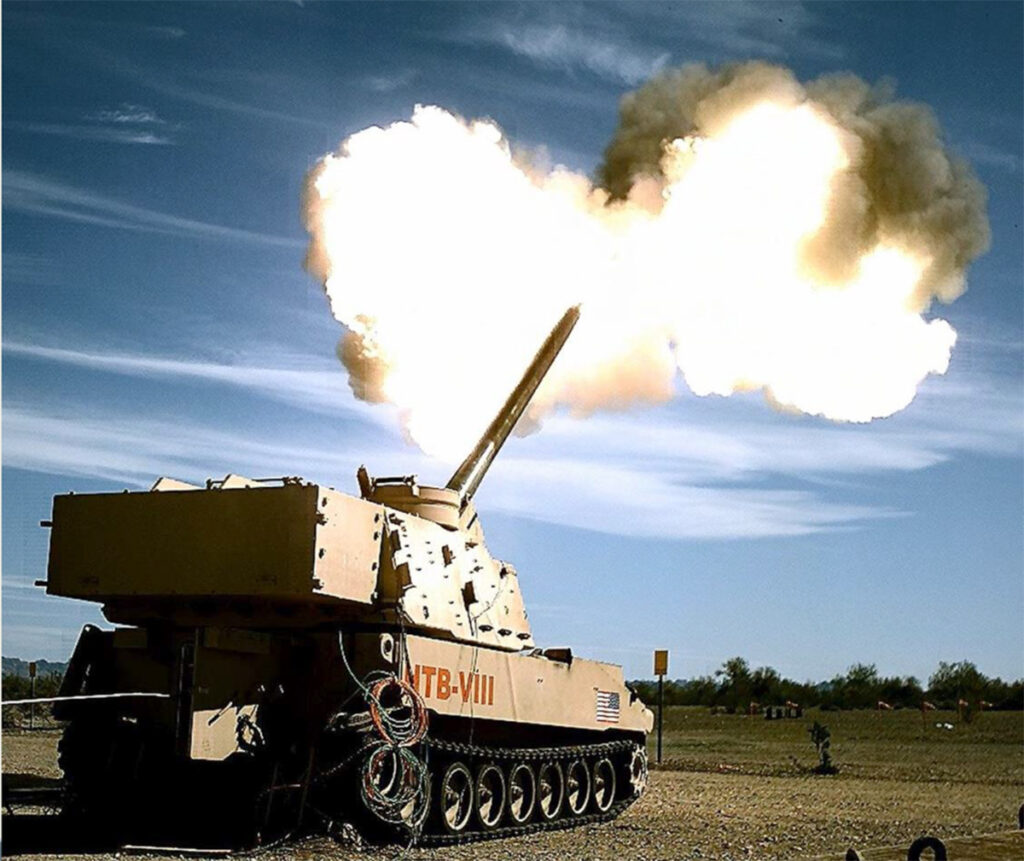
Extended Range Cannon Artillery (ERCA) test shot.
WASHINGTON: The Army’s prototype ultra-long-range howitzer, ERCA, still gets loaded the old-fashioned way — by hand — but the service is pursuing two parallel efforts to change that:
- One is an in-house Army effort, run by the Armaments Center at Picatinny Arsenal, to automate the entire loading process inside the turret. They’ll demonstrate an early version of this around September. It has a 31-round magazine, but the Army has already decided to scale it down to a lighter and more manageable 23-round capacity.
- The other, “Fire Faster,” is a Small Business Innovation Research outreach to companies outside the traditional big defense primes. Over 80 firms have submitted ideas, with the Army picking 15 for Phase I SBIR grants last fall. This week, the Army announced five companies will proceed to Phase II to further refine their prototypes. They’ll have through mid-2021 (the second quarter of the federal fiscal year) before the Army makes its final decision.
While the Armaments Center autoloader aims to automate the whole loading process, Fire Faster cherry-picks specific portions of that process to see if smaller and more focused upgrades might give more bang (literally) for the Army’s buck. Neither approach will be ready in time for the first battalion of 18 Extended Range Cannon Artillery (ERCA) prototypes to enter field testing in 2023, but the Army hopes to move beyond manual loading as early as 2025.
Fire Faster relies heavily on robotics, said Brig. Gen. John Rafferty, artillery modernization director at Army Futures Command. For example, one proposal is a robotic arm that transfers ammunition from the ready rack to the breech of the howitzer. Other ideas including automating parts of the ready rack itself to help prep round, propellant and fuses for firing; sensors to track the ammo, both for inventory management and crew safety; and improvements to ammo stowage. (The Army isn’t saying which company came up with which concept).
The Army is also looking at streamlining how ammunition is handled across the artillery force. The goal, Rafferty said, is “to decrease the amount of time we spent handling, inspecting, unpackaging, transporting ammo from point of issue” to the guns. Currently, those are laborious manual processes, ripe for automation. That’s another SBIR effort, Field Artillery Autonomous Resupply (FAAR), that’s sightly farther along, Rafferty said.
Concepts for FAAR include another robotic arm, this one to load ammo onto the howitzer vehicle, and an inventory management system that scans artillery shells like a supermarket checkout counter. “It was having these outside eyes that … showed us how much time [we spend] doing these mundane tasks that we can automate,” Rafferty said.
Move over FARA: General Atomics pitching new Gray Eagle version for armed scout mission
General Atomics will also showcase its Mojave demonstrator for the first time during the Army Aviation Association of America conference in Denver, a company spokesman said.


























